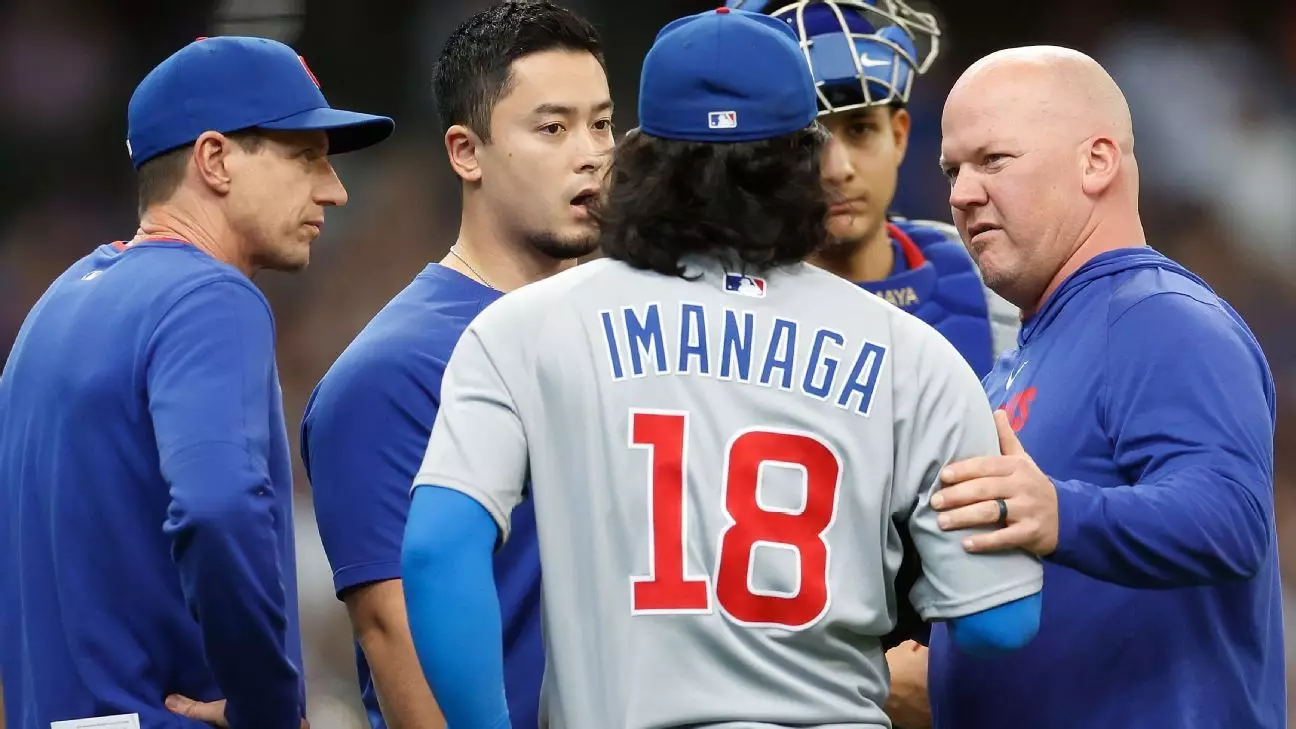In professional sports, injuries are a common adversary athletes must face, and for Shota Imanaga of the Chicago Cubs, a mild hamstring strain has brought this reality into sharp focus. This 31-year-old pitcher, noted for his skill and potential on the mound, now finds himself navigating a difficult yet vital period of recovery. Imanaga’s recent placement on the 15-day injured list is more than just a physical setback; it reflects the intricate balance athletes must maintain between performance and health—a concept that extends well beyond the diamond.
Despite being confronted with this challenge, Imanaga has taken an optimistic stance. During a recent conversation, he reflected on the insights shared by his medical team, highlighting that it was fortuitous this wasn’t a more severe shoulder or elbow injury. His perspective serves as a reminder that resilience is key during times of adversity. Athletes often live in a high-pressure environment where the stakes are monumental, and maintaining a positive mindset can significantly influence recovery outcomes.
A New Experience in Recovery
For Imanaga, the hamstring strain presents a learning curve. He notes that this injury is uncharted territory for him, leading to uncertainty regarding recovery timelines. This sentiment resonates deeply within the sports community, as each athlete’s body responds differently to injuries. Cubs manager Craig Counsell’s comments about the similarities yet distinct differences between Imanaga’s injury and that of teammate Justin Steele underscore the personalized nature of rehabilitation. It’s not just about healing a physical ailment; it’s about adapting to the new realities that come with it.
Imanaga’s proactive approach to his recovery includes keeping his arm in shape while allowing his leg the necessary time to heal. The decision to play catch reflects a thoughtful strategy—one that prioritizes readiness without negating the importance of caution. By integrating low-impact arm work, he keeps the rhythm of his pitching alive, a clever balancing act that many athletes and coaches often overlook.
The Importance of Communication and Support
Athletes rarely succeed in isolation. The camaraderie and support from teammates can play a pivotal role in overcoming injuries. For Imanaga, reaching out to fellow pitcher Justin Steele—a veteran who recently dealt with a hamstring issue—demonstrates the importance of solidarity and shared experiences in the locker room. Steele’s journey adds an invaluable layer of reassurance for Imanaga, who seeks comfort and guidance during this trying time.
This bond signifies a broader narrative about how athletes can rely on one another during their career trajectories. The dynamic of mentorship and shared wisdom can foster a culture of resilience, helping to cushion the emotional blow of an injury. The psychological support from fellow players can be just as crucial as physical rehabilitation, reinforcing the idea that sports are as much about mental fortitude as they are about physical prowess.
Reflection and Growth Through Adversity
In light of this injury, Imanaga has chosen to view his time sidelined as an opportunity for introspection. He expresses a desire to reflect on his preparation methods and whether any adjustments can be made to minimize the risks of future injuries. This level of self-awareness is not only commendable but essential in an athlete’s career management. Recognizing the myriad factors that can lead to injuries allows players like Imanaga to develop a more comprehensive approach to training and performance.
His statistics this season—holding a 2.82 ERA with three wins in eight starts—illustrate his capability. Yet, it’s crucial for Imanaga to channel this moment of vulnerability into a stepping stone for future success. By analyzing his routines and finding ways to fortify his physical resilience, he can emerge even stronger.
Paving the Way Forward for the Cubs
Imanaga’s injury creates a gap in a Cubs rotation that is already feeling the strain, with multiple pitchers sidelined. This context amplifies the stakes—not only for Imanaga but for the entire team as they strive for a postseason appearance. Cubs management, aware of the challenges ahead, will need to navigate the situation with care, potentially considering both established and emerging talents from their roster and farm system.
The uncertainty surrounding how Imanaga’s absence will be filled speaks volumes to the volatility of sports seasons. A team’s success often hinges on the depth of its roster and the ability to adapt in the face of adversity. The journey of recovery is not just a personal one for Imanaga, but a collective challenge for the Cubs as they rally around their teammates and fortify their battle for a successful season.


Leave a Reply